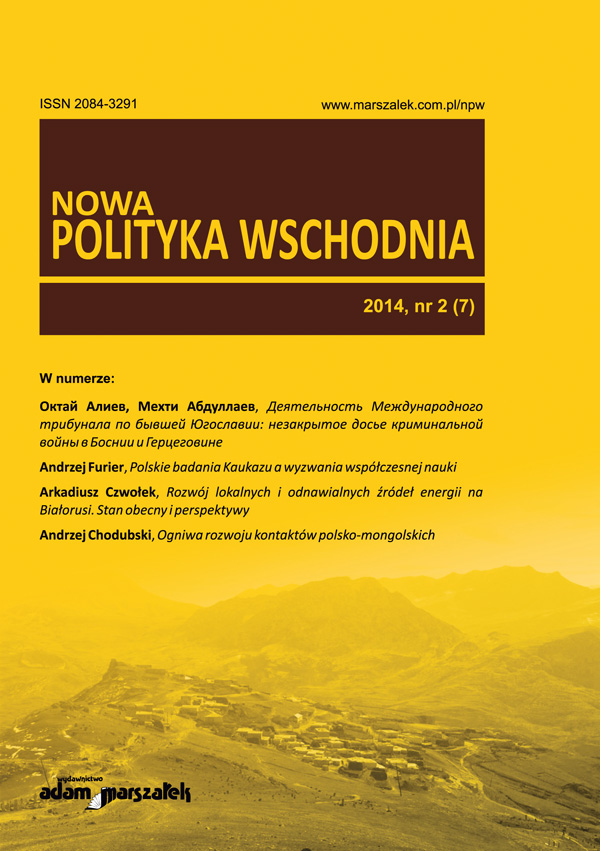Национальное самосознание и интеграционные процессы лужицких сербов в Германской империи
National identity and integration processes of the Sorbs in German Empire.
Part II: From World War I to the present day (from 1914 to the early 21st century)
Author(s): Dariusz MatelskiSubject(s): Politics / Political Sciences, Social Sciences, Inter-Ethnic Relations, Ethnic Minorities Studies
Published by: Wydawnictwo Adam Marszałek
Keywords: Sorbs;Association of National Minorities in Germany;the Federal Republic of Germany;the German Democratic Republic;Germany;Lusatia;national identity
Summary/Abstract: The First World War (1914–1918) was inextricably connected with regular con-scription. Undoubtedly it had a huge impact on reducing the population of Sorbs in Germany. Their number decreased from 102 801 to 70 998 people between the censuses in 1910 and 1925. After World War I, Lusatia failed to become a country independent of the German Empire. On 7 October 1925 the national organiza-tions of Sorbs united (Maćica Serbska, Domowina, Lusatian Alliance) and estab-lished the Wendish People’s Party, which on 26 January 1924 accessed the Asso-ciation of National Minorities in Germany. The Association’s publication was the monthly “Kulturwille” (since January 1926 “Kulturwehr”), which was issued un-til 1938. Its editor was a Sorb – Jan Skala (1889–1945). The censuses of 1925 and 1933 claimed that nearly 73,000 Sorbs lived in Germany. Under Hitler all Sor-bian associations were dissolved and in both parts of Lusatia more than 60 Sorb ian place names were removed and replaced by German ones. The years of World WarII (1939–1945) is the most tragic period in the history of the Sorbs – a period of even worse persecutions, arrests, taking the Sorbs to the concentration camps, the destruction of their properties, the suppression of all forms of autonomy and self-organization. Freedom from Fascism was given to the Sorbs on 6 April 1945 by troops of First Ukrainian Front and the Polish Second Army. On 23 March 1948 – under pressure from the Soviet occupation authorities – the National Parliamentof Saxony (Landtag) passed a law guaranteeing the rights of the Sorbs. GDR au-thorities sought to reduce the population of the Sorbs and the use of Sorbian lan-guage. Only after the absorption of the GDR by the FRG – called the second unifi-cation of Germany – on 3 October 1990, the Sorbian population began to use civil rights emerging from the Basic Law of the FRG. Currently about 60,000 Sorbs live in Germany, out of which 20,000 in Brandenburg (Protestants) speaking Low-er Sorbian (similar to Polish), and 40,000 in Saxony (Catholics) speaking Upper Sorbian (similar to Czech). The majority are elderly people (60 and over). Younger generation speaks almost exclusively German
Journal: Nowa Polityka Wschodnia
- Issue Year: 7/2014
- Issue No: 2
- Page Range: 182-209
- Page Count: 28
- Language: Russian

